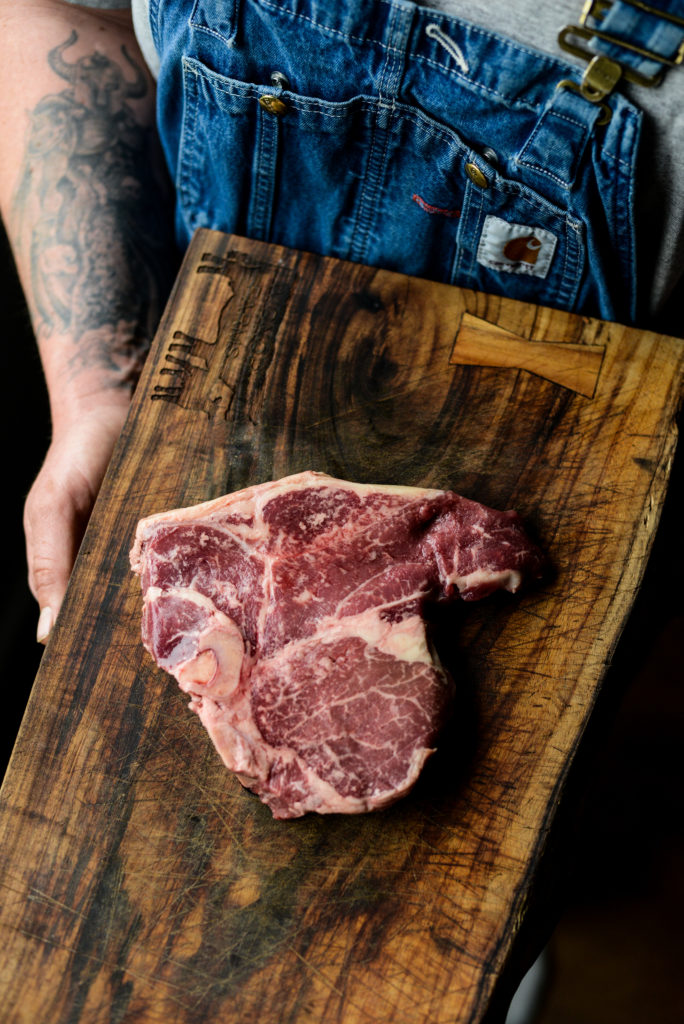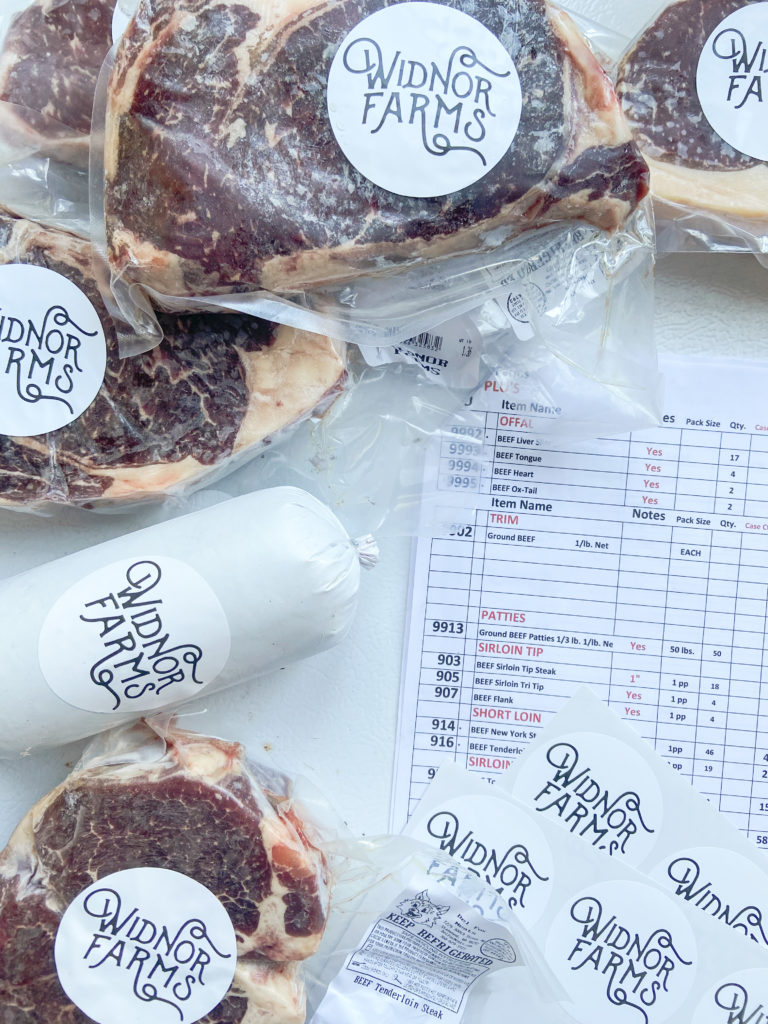
There’s nothing we love more than being able to fill our customer’s freezers with delicious and premium regeneratively-raised meats, straight from our ranch. In addition to offering our dry aged Angus beef and heritage pork by the cut, we’re also excited to give our customers the opportunity to purchase beef and pork shares, where they receive a portion of the whole animal – typically 1/16th of a steer and 1/2 of or a whole hog.
Typically, farms and ranches who offer something similar require customers to go through what’s called custom processing. In this scenario, the customer purchases a live animal from the rancher for an agreed upon price per pound. The customers must then reach out to state inspected butcher that the farmer coordinated with to request how they want the carcass cut. During this time the butcher will also give them the hanging weight, which is used to determine the amount owed to the rancher. In the end, the customer is responsible for separately paying all butcher fees, as well as any transport fees (only federally inspected meats can cross interstate lines), and of course the amount owed to the rancher.
Admittedly, buying meat in bulk this way can be pretty confusing and complicated, especially when having to consider all the various calculations between the rancher and the butcher and understanding the different terms used in reference to the final price breakdown.
So, in the spirit of transparency, let’s break down the differences between live weight, hanging weight and packaged weight.
Live Weight
Live weight refers to what the animal weighs before harvesting/butchering. We raise our cattle to come in at around 1,400 pounds live weight.
Hanging Weight
Sometimes also called hot weight, the hanging weight refers to what the carcass weighs after the head, hide and internal organs have been removed and the blood has been drained. With cattle, usually the hanging weight accounts for about 60-65% of the live weight. Doing the calculations, this means that the hanging weight of one of our steers is around 840 pounds.
Packaged Weight
The packaged weight is what the carcass weighs after it has been processed and broken down by the butcher and packaged. This is the weight that you, the customer, take home. It’s important to note that the packaged weight is usually around 25% less than the hanging weight (65-72% of the hanging weight total), though it varies from animal to animal. This loss is due to fat and connective tissue trimming, removal of bones depending on the cut(s), as well as the dry aging process, which removes moisture.
What We Offer
Here at Widnor Farms, we like to keep things simple. As part of our beef and pork share program we work directly with the butchers and offer all-inclusive packaged pricing to our customers, taking any separate fees and guesswork out of the equation.

[…] when I shared more about buying beef in bulk and the differences between live weight, hanging weight and packaged weight? Now I want to dive a […]